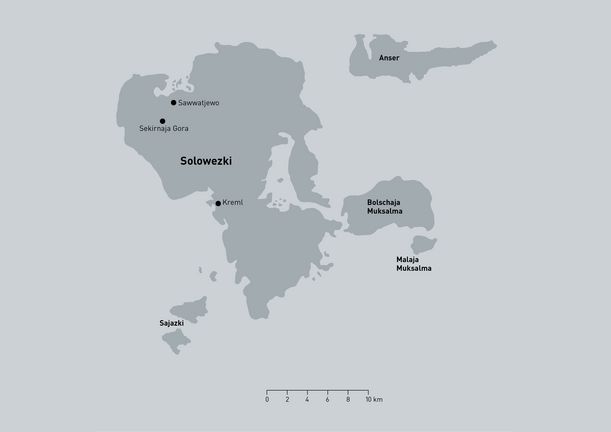The “Solovki Special-Purpose Camp”
Solovki Camp, which would come to represent the prototype and “school” of the Gulag, was established in 1923. The transition from the NEP era to Stalinism is mirrored in the number and treatment of the prisoners.
The Solovetsky Islands are situated in the White Sea. In 1923, the GPU (State Political Directorate, successor to the “Cheka”) sent the first political inmates to Solovetsk. The monastery there was converted to serve as a camp. The prisoners had to perform forced labour, initially for the camp operations themselves. Thousands died as a result of undernourishment, insufficient hygiene and extreme climatic conditions. Others were tortured or shot to death. In 1930, Solovetsk was awarded the status of “corrective labour camp” whose conditions anticipated those of later such institutions. It was closed in 1939 in the period leading up to the “Winter War” between the Soviet Union and Finnland.
First-hand report by Dmitry Likhachov
"I will try to describe the organization of the camp. There were 14 squadrons in the Kremlin (as a section of the monastery buildings was called, fenced with walls of giant boulders overgrown with orange lichen). The 15th squadron, outside the Kremlin, consisted of convicts who lived in different "shalmany” [crooks’ slang for dive, joint; robbers’ den, comfortless, dirty lodging – translator’s note] – at the Mechanical Plant, the Alabaster Factory, the Baths No. 2, etc. The camp burial-ground was called 'the 16th squadron’. They were joking, but in some squadrons in winter, corpses would lie naked and uncovered by earth.”
Report by Dmitry Likhachov, 1997
D. Likhachov (1906-1999), philologist, later member of the academy, arrested in 1928 and deported to the Solovetsky Islands, early release in 1932 with the distinction “best worker” in the construction of the White Sea – Baltic Canal.
Source: Dmitri Lichatschow: Hunger und Terror, Ostfildern vor Stuttgart, 1997

